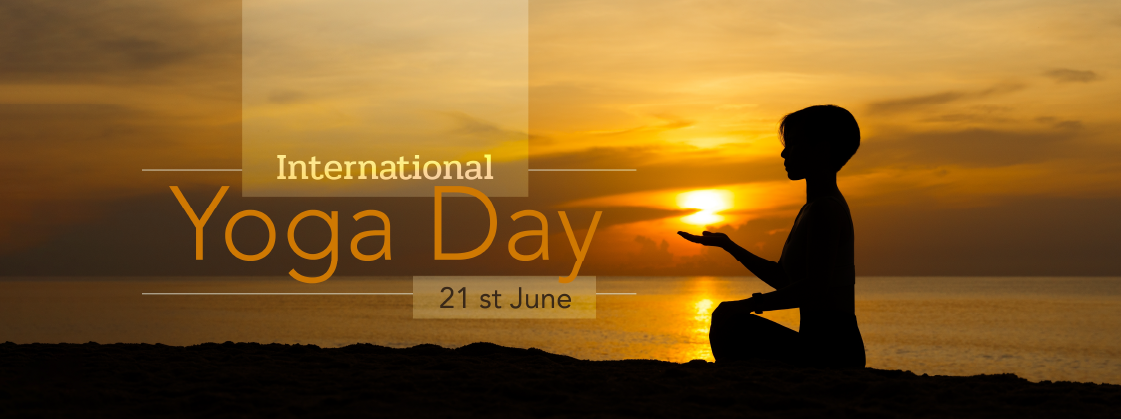International Yoga Day 2025: Theme, Date, Venue & More
Table of Contents
International Yoga Day, observed annually on June 21, is a global event that promotes physical, mental, and spiritual well-being through the ancient practice of yoga. Since its official recognition by the United Nations in 2014, this day has served as a platform to highlight the scientific benefits of yoga, its cultural significance, and its power to bring people together across nations.
In 2025, the world once again unites to celebrate International Yoga Day with mass yoga sessions, awareness campaigns, and wellness retreats aimed at promoting holistic health and inner peace.
International Yoga Day: Historical Background
The concept of International Yoga Day was first proposed by Indian Prime Minister Narendra Modi on September 27, 2014, during his speech at the United Nations General Assembly (UNGA). He emphasized that June 21, the summer solstice, is the longest day of the year in the Northern Hemisphere and holds spiritual significance in many cultures. The proposal gained unprecedented support from 177 UN member states, making it one of the fastest-adopted UN resolutions in history.
On December 11, 2014, the United Nations General Assembly (UNGA) officially declared June 21 as International Yoga Day. The first International Yoga Day was celebrated on June 21, 2015, with millions of people across 192 countries participating in mass yoga events. Below are the key highlights of First International Yoga Day 2015 highlights:
- The main event was held at Rajpath, New Delhi, India, where over 35,000 participants, including dignitaries from 84 nations, performed yoga together.
- Guinness World Records recognized the event as the largest yoga session ever held, with 35,985 participants and 84 nationalities represented.
- Across the globe, 192 countries organized yoga events, including in New York’s Times Square, Paris, Beijing, London, and Tokyo.
Evolution of International Yoga Day: Themes & Global Participation
Since its inception in 2015, International Yoga Day has gained immense popularity, evolving each year to reflect new global health priorities and societal challenges. The themes chosen annually to highlight different aspects of yoga’s role in well-being, mental health, and global harmony. From its initial focus on harmony and peace to more specific issues like heart health, pandemic recovery, and climate resilience, Yoga Day has become a platform to promote holistic wellness on a global scale.
Governments, international organizations, NGOs, and yoga institutions actively participate in this movement, organizing mass yoga events, awareness programs, and digital campaigns to spread the benefits of yoga across different communities. Following are the themes of International Yoga Day Over the Years:
| Year | Theme | Focus |
| 2015 | Yoga for Harmony and Peace | Promoted global unity and mental well-being. |
| 2016 | Yoga for Health | Focused on physical well-being and disease prevention. |
| 2017 | Yoga for Wellness | Encouraged a holistic approach to a healthy lifestyle. |
| 2018 | Yoga for Peace | Emphasized inner peace, mindfulness, and emotional balance. |
| 2019 | Yoga for the Heart | Highlighted yoga’s role in heart health and stress reduction. |
| 2020 | Yoga at Home, Yoga with Family | Adapted to the COVID-19 pandemic, promoting at-home yoga. |
| 2021 | Yoga for Well-being | Stressed the importance of yoga for mental and emotional health. |
| 2022 | Yoga for Humanity | Encouraged using yoga for healing and resilience post-pandemic. |
| 2023 | Yoga for Vasudhaiva Kutumbakam (One Earth, One Family, One Future) | Aligned with the G20 vision for global unity and sustainability. |
| 2024 | Yoga for Women Empowerment and Humanity | Focused on women’s health, empowerment, and inclusivity. |
| 2025 | (To Be Announced) | Expected to emphasize mental resilience, sustainability, and global unity. |
Global Significance of Yoga: Why the World Needs Yoga More Than Ever
Yoga is no longer just an ancient spiritual discipline—it is a scientifically proven method for maintaining physical, mental, and emotional health. In today’s fast-paced world, yoga has become an essential tool for stress management, chronic disease prevention, and emotional resilience. Below are the various reasons as to why yoga is more relevant today than ever before:
- Rapidly increasing stress levels: Work pressure, personal challenges, and digital distractions have led to a global mental health crisis. Yoga reduces cortisol (stress hormone) levels, promoting relaxation.
- Sedentary lifestyles – More people spend long hours sitting at desks, leading to back pain, obesity, and cardiovascular issues. Yoga improves flexibility, posture, and circulation.
- Rising lifestyle diseases – Diabetes, hypertension, and heart disease are increasing globally. Yoga helps regulate metabolism, blood pressure, and heart function.
- Mental health concerns – Depression, anxiety, and burnout are becoming more prevalent. Yoga acts as a natural therapy for emotional balance and mental clarity.
- Need for mindfulness and inner peace – With increasing chaos in daily life, yoga provides a sanctuary for self-reflection, awareness, and emotional stability.
Physical, Mental and Spiritual Benefits of Yoga
Yoga is much more than just a fitness trend—it is an ancient practice that harmonizes the body, mind, and spirit. By integrating movement, breath control, and meditation, yoga has emerged as a powerful tool for physical health, mental clarity, and emotional resilience. Over the years, scientific research has confirmed yoga’s ability to improve overall well-being, reduce the risk of chronic illnesses, and enhance longevity. Its benefits extend beyond the individual, fostering global unity and a sense of peace across different cultures and backgrounds.
In this section, we explore how yoga impacts physical health, mental wellness, and spiritual harmony, along with key yoga postures and breathing techniques to integrate into daily life.
| Category | Benefit | Impact | Recommended Yoga Practices |
| Physical Health Benefit | Improves Flexibility, Strength & Posture | Enhances muscle elasticity, reduces joint stiffness, and improves spinal alignment. | Surya Namaskar (Sun Salutation), Trikonasana (Triangle Pose) |
| Enhances Respiratory & Cardiovascular Health | Strengthens lung capacity, promotes better oxygen flow, and improves heart function. | Anulom Vilom (Alternate Nostril Breathing), Bhujangasana (Cobra Pose) | |
| Regulates Blood Pressure & Metabolism | Helps manage hypertension, balances hormones, and supports digestive health. | Paschimottanasana (Seated Forward Bend), Vrikshasana (Tree Pose) | |
| Mental Health Benefit | Reduces Stress, Anxiety & Depression | Calms the nervous system, regulates emotions, and promotes relaxation. | Pranayama (Breathwork), Shavasana (Corpse Pose) |
| Enhances Cognitive Function & Focus | Improves memory retention, mental clarity, and decision-making skills. | Nadi Shodhana (Alternate Nostril Breathing), Meditation | |
| Promotes Better Sleep & Emotional Stability | Helps manage insomnia and regulates mood swings. | Viparita Karani (Legs Up the Wall Pose), Yoga Nidra (Yogic Sleep) | |
| Spiritual & Social Benefit | Encourages Self-Discipline & Compassion | Fosters better relationships, empathy, and patience. | Karma Yoga (Selfless Service), Loving-Kindness Meditation |
| Creates a Sense of Global Unity | Brings people together across different cultures, religions, and beliefs. | Mantra Chanting, Kirtan (Spiritual Singing) | |
| Strengthens Cultural & Philosophical Connections | Promotes ethical living and respect for diversity. | Bhakti Yoga (Path of Devotion), Jnana Yoga (Path of Knowledge) |
International Yoga Day 2025: Global Events & Celebrations
In 2025, International Yoga Day is expected to attract millions of participants through large-scale yoga sessions, corporate wellness programs, school initiatives, and virtual events. As more people recognize yoga’s physical, mental, and spiritual benefits, this event serves as a reminder of its universal appeal. From public yoga festivals in India to corporate wellness programs in the USA and social media awareness campaigns worldwide, let’s explore how different regions will celebrate International Yoga Day 2025:
| Event Type | Description & Impact |
| Mass Yoga Sessions | Thousands participate in public yoga events, often led by government officials and top yoga gurus. In India, the Prime Minister leads large-scale yoga demonstrations. |
| Workshops & Webinars | Yoga retreats are organized in urban centers, resorts, and online platforms, focusing on mental well-being, stress relief, and mindfulness. |
| Social Media Campaigns | Hashtags like #InternationalYogaDay, #YogaForAll, and #YogaForLife trend globally, encouraging people to share their yoga experiences. |
| Corporate Wellness Programs | Companies introduce workplace yoga sessions to help employees reduce stress and improve focus. |
| School & University Participation | Educational institutions host yoga awareness sessions, competitions, and live demonstrations, integrating yoga into student life. |
| Virtual Global Yoga Marathon | A 24-hour online event where yoga practitioners across the world come together to participate in live yoga sessions. |
Conclusion
Yoga is not just a fitness routine—it is a lifestyle that enhances physical health, mental resilience, and spiritual growth. Whether you’re looking to reduce stress, improve flexibility, or find inner peace, yoga offers a holistic solution to modern-day challenges. This International Yoga Day, take a step towards self-care, balance, and well-being!







